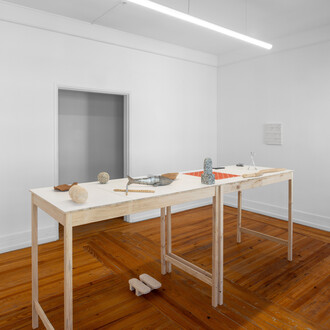Inner Space is part of an ongoing research project into the construction of the architectural imagination. It sets out to investigate the space between the inner and outer realities, a space that could be inhabited and explored in itself, looking for those moments in which the two realms interact most vividly. Besides, it also identifies two parallel and strictly intertwined movements intervening in the construction of architectural imagination: a collective one and an individual one, two spheres complementing each other. The aim is to identify imagination as an immersive territory that can be experienced, crossed and even inhabited, defined as a human ability which partly relies on a collective process. This collective moment in the construction of the imagination intertwines with an individual one, developed by each author. Inner Space also identifies how architectural imagination is capable of nourishing other disciplines: from art to videogames, virtual reality, comic books and forensic investigations.
The architectural design process usually starts with the identification of a number of ideas and mental images, which are translated into a series of documents (sketches, working models and drawings). This process does not resume each time a new project begins, instead relies on a lifelong construction of imagination fed by a casual voluntary relationship between the author and a field of images and concepts over a long time. Architects drew their inner space, constructing inventive means to connect the outer world and inner realm of their mind. The exhibition looks behind the curtains of the design process, questioning how the cognitive process of imagination unfolds and how it gets translated into a work of architecture, by identifying two parallel and strictly intertwined movements in the construction of imagination: a collective and an individual one.
Featuring works by: 1825 Research, A Lim Kim, Adolphe Appia, Aldo Rossi, Aldo Van Eyck, Aleksandra Oszczak, Alvin Boyarsky, Andrea Palladio, Antonello da Messina, Atelier Bow-Wow, Athanasius Kircher, AUA Paul Chemetov, Auguste Choisy, Barbas Lopes Arquitectos, Beatriz Peró Giannini, Ben Babbitt, Benjamin Cole, BRUTHER, Cardboard Computer, Carlijn Olde Beverborg, Carlo Pagani, Carmody Groarke, Claude Nicolas Ledoux, Cruz Y Ortiz Arquitectos, Dankmar Adler, David Katz, Davide Trabucco, Diener & Diener, DOGMA, dreambeam, Eduardo Souto de Moura, Edwin D.Babbitt, Elisa Galigny de Bonneval, Ephraim Chambers, Esjieun Kim, Eugène Emmanuel Viollet-Le-Duc, Forensic Architecture, Francesco di Giorgio Martini, François Chauveau, Franz Sales Meyer, Gabriel Thouin, Gareth Damian Martin, Georg Andreas Böckler, George Bailey, Georges Steinmetz, Gervase of Ebstorf, Giaime Meloni, Giancarlo Durisch, Giulio Camillo Delminio, Go Hasegawa and Associates, Grayson Perry, Hans Poelzig, Henri La Fontaine, Henrique Vieira Ribeiro, Herbert Bayer, Hokusai Katsushika, Irena Gajic, Isabel Seliger, Jacques Fabien Gautier d'Agoty, Jacques-François Blondel, Jake Elliott, James Burgess, James Fergusson, Jean Antoine, Jochen Gerner, Johann Gottfried Grohmann, Johann Heinrich Lambert, Johann Wolfgang von Goethe, John Soane, Juan Caramuel Lobkowitz, Julien Rodriguez, Katryna Ciurlionis, Kazimir Malevitch, Kon Wajiro, Lanza Atelier, Le Corbusier, Liliana Farber, Lina Bo Bardi, Liza Diekema, Lizzie J. Magie, Louis Sullivan, Louise Drulhe, Luca Galofaro, Luca Pacioli, Lucille Lustremant, Lütjens Padmanabhan Architekten, Madeleine de Scudéry, Madelon Vriesendorp, Magdalena Wierzbicka, Manuele Fior, Marco Vitruvio Pollione, Massimo Scolari, Max Brückner, Molleindustria, Monadnock, Moses Harris, Motohide Kano, Noemie Goudal, Norman Kelley, Office Kersten Geers David Van Severen, OMA, Oswald Mathias Ungers, Paul Otlet, Percy Brown, Philippe Weisbecker, Prof. Hans Kollhoff Architekten, Rem Koolhaas, Robert Morris, Robert Sayer, Rustini, SANAA, Sebastiano Serlio, Shen Yuan, SKREI, Starrett & Van Vleck, Studio Vatn, Tamas Kemenczy, Tang Dai, Thomas Forsythe, Ustwo Game, Utagawa Kunisada, Valerio Olgiati Architect, Villard de Honnecourt, Vladimir Tatlin, Wang Youdun, Werner Lindner, William Chyr, William Henry Toms.
















